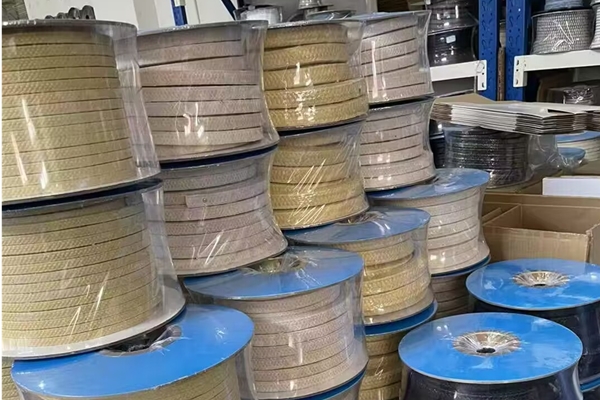Metal-Jacketed Gaskets: Design and Applications for Reliable Sealing in Medium- and Low-Pressure Conditions
Metal-jacketed gaskets are widely used as effective sealing solutions in medium- and low-pressure environments. This article provides an overview of the advantages, materials, manufacturing processes, and practical considerations for using metal-jacketed gaskets.
Characteristics and Improvements of Metal-Jacketed Gaskets
Advantages
High Strength: Excellent compressive strength makes them suitable for large-diameter pressure vessels.
Durability: Resistant to breakage, offering robust and long-lasting performance.
Versatility: Adaptable to a variety of media, making them ideal for sealing pipes, valves, and equipment flanges.
Limitations and Recommendations for Improvement
Limited Resilience: Adding a flexible graphite sheet to the outer layer can enhance sealing performance.
High Surface Requirements: Proper sealing requires smooth flange surfaces and sufficient clamping force.
Material Enhancements: Tailor the jacket material to suit temperature requirements:
Graphite: Withstands temperatures up to 650°C and offers excellent corrosion resistance.
Ceramic Fiber: Suitable for high-temperature environments up to 1200–1600°C.
Material Selection
Jacket Materials
Stainless Steel: Grades 201, 304, 316, and 316L, with 316L offering superior corrosion resistance.
Other Metals: A3 carbon steel, copper, and aluminum.
Filler Materials
Flexible Graphite (80%): Resistant to high temperatures and chemical corrosion.
Asbestos (10%): Suitable for medium- and low-temperature conditions.
Non-Asbestos: Often used for eco-friendly applications.
Ceramic Fiber (10%): Ideal for high-temperature applications.
Manufacturing and Quality Control
Manufacturing Requirements:
Jacket Welding:For gaskets larger than 1 meter or non-corrosive applications, metal welding is acceptable. Welding 316 and 316L small gaskets is prohibited to maintain material integrity.
Square gaskets should be integrally forged with rounded corners and welded using TIG (tungsten inert gas) welding. Right-angle designs and soldering with tin are strictly prohibited.
Filler Materials: Avoid low-quality fillers such as substandard ceramic fiber cloth.
Ensure uniform graphite filling and minimize segmental joints.
Appearance Inspection: Surface should be free of wrinkles or excessive overlap.
Weld joints must be polished and smooth, with no scratches or welding defects (e.g., burn-through or incomplete fusion).
Quality Testing:
Metal Banding: Outer diameter: 3–5 turns without filler.
Inner diameter: 2–3 turns without filler.
Spot Welding: At least four weld points on both the inner and outer diameters, ensuring no defects.
Surface Flatness:Filler should extend 0.15 mm ± 0.1 mm beyond the metal band.
Burr Removal: All burrs on the inner and middle rings must be removed.
Installation and Usage Guidelines:
Preparation Before Installation
Surface Cleaning: Ensure the mounting surface is clean, smooth, and free of dust or oil.
Positioning: Precisely mark the installation location using tools such as rulers or protractors.
Fixation Methods:Using Adhesive: Apply adhesive to the gasket, then allow it to dry for about an hour before use.
Using Screws: Align the gasket with the mounting position and tighten screws appropriately to avoid over-tightening or damage.
Installation Tips: Avoid Stress Concentration: Do not install in reinforced areas to prevent cracking.
Allow Stretching Space: Ensure proper flexibility to avoid deformation or cracks post-installation.
Protect the Surface: Avoid contact with hard objects to prevent scratches or dents.
Common Issues and Recommendations
Corner Design for Square Gaskets:
Corners should be rounded and forged in a single process. Soldering with tin is prohibited.
Welding Process Selection:Use TIG welding instead of tin soldering to enhance gasket strength and durability.
Material Quality Verification: Ensure the use of high-quality stainless steel (e.g., 316/316L) and appropriate application practices.
By carefully selecting materials, adhering to manufacturing standards, and following proper installation procedures, metal-jacketed gaskets can deliver exceptional sealing performance and extend equipment life.




